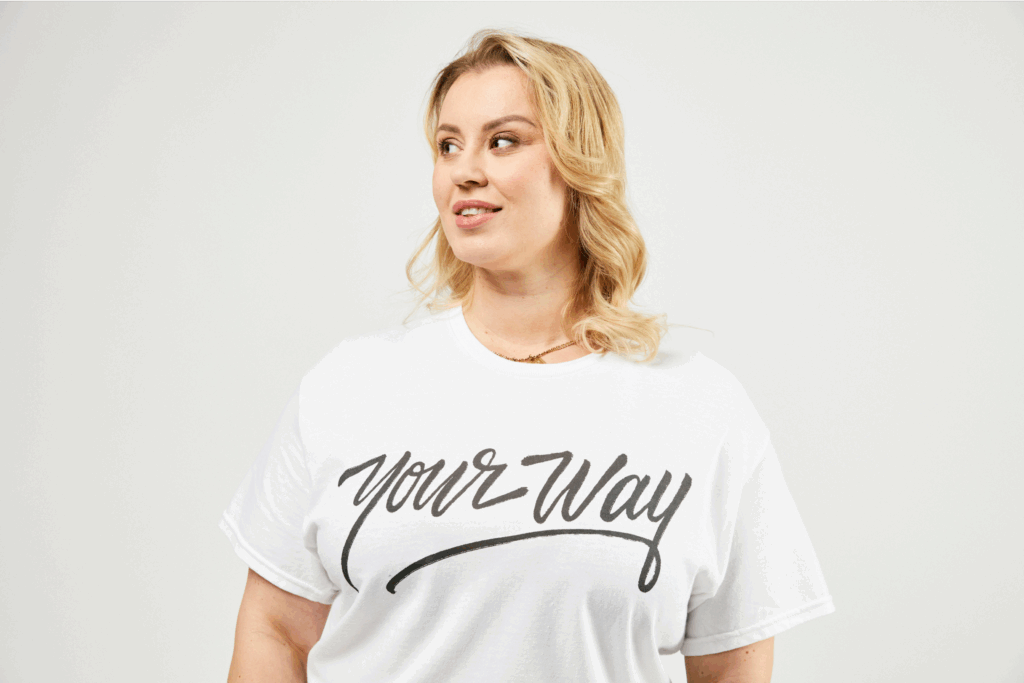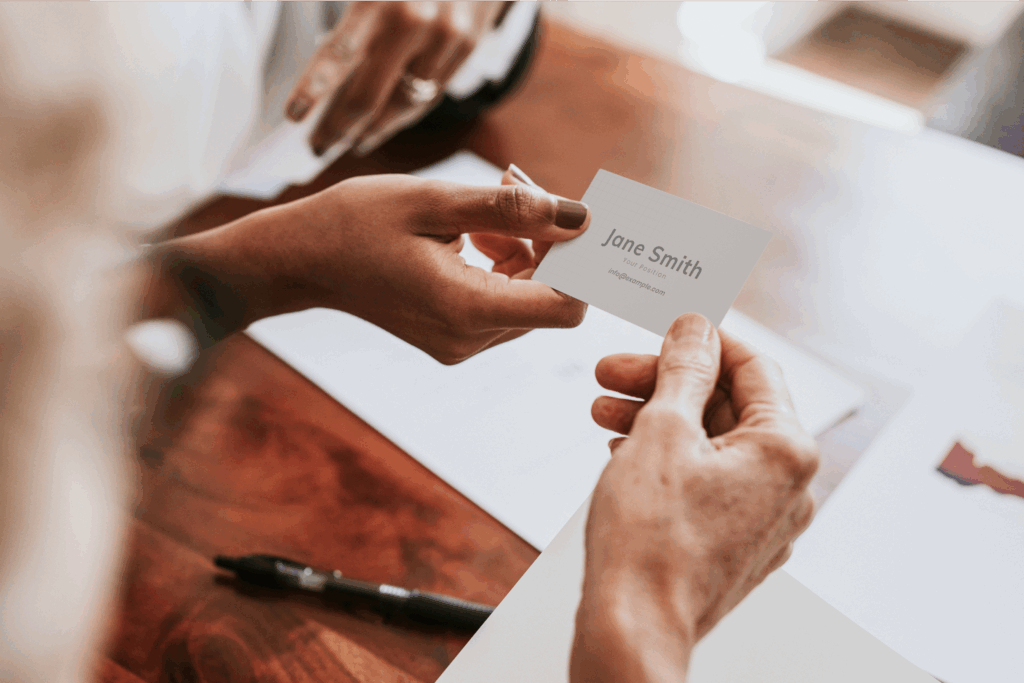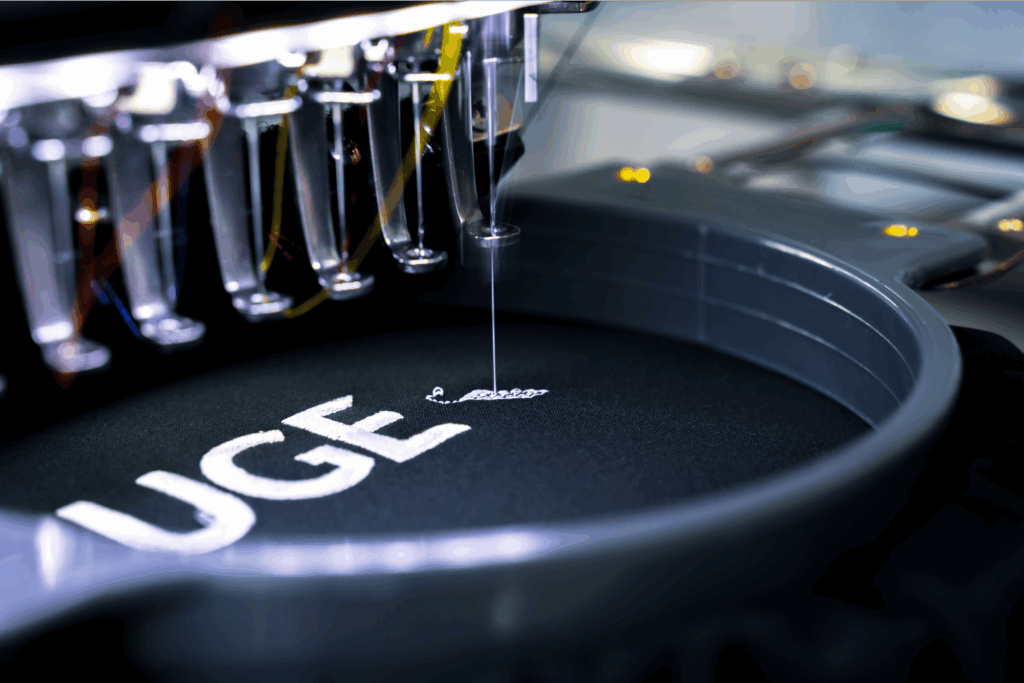Turn followers into customers
The platform changed the way we listen to music and how creatives earn a living. But a burning question remains: how much do artists make on Spotify?
Let’s break down Spotify’s royalty system, learn how artists get paid, compare streaming alternatives, and see how Print on Demand fits into all this (hint: it can seriously help boost artists’ income). This guide will equip you with valuable insights to choose the perfect platform to showcase your music and beyond!
This post may contain affiliate links, which means we may earn a commission if you make a purchase through those links. This comes at no additional cost to you.
Spotify streams can greatly improve your music career
Spotify doesn’t sign royalty agreements directly with the artists but with their distributors or record labels, who often take a cut from the profit.
Whenever a song is streamed or performed, the copyright owner (often a composer, author, or artist) receives streaming royalties – fees paid throughout the copyright term, typically lasting 70 years.
The payment frequency also depends on the contract, although streaming payouts are usually distributed monthly.
So, how does Spotify pay artists for their work? Spotify pays the rights-holders, and then the labels, distributors, or publishers (for songwriters) pay the artists accordingly. An independent artist must have a contract with a music distributor before signing up for Spotify for Artists. Subscription-based services like DistroKid, Ditto, and TuneCore allow almost anyone to stream their music on Spotify or other streaming platforms.
How much does Spotify pay per stream?
![How Much Does Spotify Pay per Stream How much do artists make on Spotify in [bp_year]? 1](https://printify.com/wp-content/uploads/2024/10/How-Much-Does-Spotify-Pay-per-Stream.jpg)
Spotify pays artists an estimated $0.003 to $0.005 per stream. The exact amount varies based on factors like the listener’s country, subscription tier (free or premium), and specific agreements between the artists and labels or distributors.
Since April 2024, Spotify only pays artists once they’ve reached at least 1,000 streams in the last 12 months. In other words, you can earn about $3,000 to $5,000 in royalties for one million streams.
Spotify uses a pro-rata payment model, distributing royalties to rights holders based on their share of total monthly streams. Artists get paid on Spotify according to their agreements with those rights holders.
Use an online streaming royalties calculator to estimate how much Spotify and Apple Music pay artists.
How much do artists make on Spotify?
![How Much Do Artists Make on Spotify How much do artists make on Spotify in [bp_year]? 2](https://printify.com/wp-content/uploads/2024/10/How-Much-Do-Artists-Make-on-Spotify.jpg)
Spotify uses a pro-rata model that pools all ad and subscription revenue for the month, keeps 30%, and distributes the remaining 70% to artists based on their share of total streams.
Based on this and the estimated average per-stream payout, here’s how much Taylor Swift and other artists have made for lead and featured tracks:
- Taylor Swift – 85+ billion lead streams – over $328 million
- Drake – 77+ billion lead streams – over $304 million
- Bad Bunny – 72+ billion lead streams – over $288 million
- The Weeknd – 58+ billion lead streams – over $230 million
- Ed Sheeran – 48+ billion lead streams – over $193 million
While Spotify revenue is directly tied to listens, success stories abound for lesser-known artists as well. In fact, according to Spotify’s insights, many artists who had an amazing year financially weren’t even that big. Like Ellie Goulding said, anything could happen (in the world of Spotify streams).
Earn as an artist with Printify
Sign Up for Printify to create and sell merch to increase your income.
Spotify streaming royalties 101
![Spotify Streaming Royalties 101 How much do artists make on Spotify in [bp_year]? 3](https://printify.com/wp-content/uploads/2024/10/Spotify-Streaming-Royalties-101.jpg)
Types of royalties
There are two kinds of royalties on Spotify based on who receives them:
- Recording royalties are usually paid to distributors or record labels when they’re the licensors or rights holders of the artists’ songs.
- Publishing royalties are for composers, paid to societies or publishers, who receive them from Spotify according to where the song is played.
How to calculate Spotify royalties
According to Spotify, its music streaming service pays rights-holders a net revenue from what’s earned through advertising and Spotify Premium listeners.
This amount is calculated by deducting taxes, payment processing, billing fees, and sales commissions from the total earnings.
Spotify then divides the artist’s monthly streams by the total streams on the platform. This streamshare calculation is used instead of an absolute per-play or per-stream rate.
The amounts will differ depending on the regions where the songs are listened to, how many streams there are by free account and paid subscription holders, and the number of ads displayed.
Alternative ways to make money as an artist
While “How much does Spotify pay per stream?” is a common question, there’s more to a music career than just streaming revenue. Even before you have a massive following, explore income streams beyond live shows and new releases.
The music industry offers a variety of ways to monetize your passion while building your audience.
Selling Spotify merch
![Selling Spotify Merch 1 How much do artists make on Spotify in [bp_year]? 4](https://printify.com/wp-content/uploads/2024/10/Selling-Spotify-Merch-1.jpg)
Spotify-Shopify integration and social media promotion open Spotify merch sales for artists. Print-on-demand platforms (like Printify) make it easy – our network does the printing and shipping, freeing artists to focus on new releases.
Blogging
Create and monetize a blog on WordPress, your website, or a similar platform. Promote your content and connect with fans on Spotify through your artist profile.
A blog brings organic traffic and increases exposure, especially if you include links to your artist page from various streaming services. Partner with advertisers that align with your image, or use it as a platform to promote and sell your merch.
Teaching
Teach your fan base about the music industry through videos, tutorials, instructional blog posts, conferences, and chats. Combine these strategies and offer courses on recording music, alongside singing, playing, and production techniques and how-tos.
Use platforms like Nebula, Patreon, or Skillshare and plugins such as LearnDash, LearnPress, or Sensei to organize and monetize the lessons.
Check out our blog for more information on how to make money as an artist.
Earn as an artist with Printify
Spotify vs other streaming platforms
Consider the platform’s popularity when looking for the best streaming platform to make money in the music industry. After all, the more users there are, the more chances to get your music streamed and make more money.
Let’s compare some of Spotify’s pros, cons, and subscription plans with other streaming services.
Spotify
![Spotify vs Other Streaming Platforms Spotify How much do artists make on Spotify in [bp_year]? 5](https://printify.com/wp-content/uploads/2024/10/Spotify-vs-Other-Streaming-Platforms-Spotify-1024x577.jpg)
Spotify’s pros make it one of the best options for developing a music career – a solid audience with a discovery algorithm that allows new artists to gain recognition. They pay royalties at an industry standard and charge users reasonable subscription fees.
Monthly subscription plans
- Premium Individual – $10.99.
- Premium Duo – $14.99 for two accounts living at the same address.
- Premium Family – $16.99 up to six accounts living at the same address.
- Premium Student – $5.99.
Pros:
- Well-rounded features.
- Transparency regarding artist streaming income with public data available.
- Extensive library with over 80 million songs.
- Download music for offline use with Spotify Premium.
- The free plan offers unlimited daily listening.
- Music recommendations are better than the competition’s, with users returning to those suggested frequently.
Cons:
- Very lengthy advertisements in the free plan.
- Limited control over what’s playing in the free plan, such as skips per hour, the rewind/forward functions, and restricted customization.
- Lags behind when it comes to high-fidelity options.
Apple Music
![Spotify vs Other Streaming Platforms Apple music How much do artists make on Spotify in [bp_year]? 6](https://printify.com/wp-content/uploads/2024/10/Spotify-vs-Other-Streaming-Platforms-Apple-music-1024x528.jpg)
Apple’s music subscription service combines streaming with offline listening. Apple Music for Artists offers exclusive resources such as spatial audio and Logic Pro, plus marketing and analytics.
Music royalties are calculated according to streamshare and vary depending on the listeners’ location and subscription plan. The Apple Music pay-per-stream amount ranges from $0.007-$0.01.
Monthly subscription plans
- Individual – $10.99.
- Family – $16.99 up to six profiles.
Pros:
- The sound quality is better than Spotify’s.
- Extensive music library with over 100 million songs.
- Download music for offline listening.
- Spatial and lossless audio.
- Intuitive and clean interface and multi-platform integration within the Apple ecosystem.
Cons:
- Limited to the Apple ecosystem.
- No ongoing free access, only a one-month trial.
- Podcasts and audiobooks need a separate app.
- Restricted music discovery algorithm.
Tidal
![Spotify vs Other Streaming Platforms Tidal How much do artists make on Spotify in [bp_year]? 7](https://printify.com/wp-content/uploads/2024/10/Spotify-vs-Other-Streaming-Platforms-Tidal-1024x577.jpg)
Tidal is a premium music streaming service owned by Block Inc. that guarantees top-quality sound and recognition for behind-the-scenes song contributors.
Music business superstars, including Alicia Keys, Daft Punk, Madonna, Jay-Z, Beyoncé, Rihanna, and Nicki Minaj, own shares of the service, promoting artist support and promising more money and album sales.
The pay-per-stream amount for Tidal is around $0.011, making it one of the best-paying options for artists.
Monthly subscription plans
- Free 30-day trial.
- HiFi individual – $9.99.
- HiFi family – $14.99 up to six profiles.
- HiFi plus individual – $19.99.
- HiFi plus family – $29.99 up to six profiles.
- Student – 50% discount.
- Military – 40% discount.
Pros:
- Listener control while using the free trial.
- Vast library with over 70 million songs.
- Lossless audio.
- Original content and editorial write-ups.
- Downloads content for offline listening.
- Intuitive and streamlined user interface.
Cons:
- Ads every three skips while using the free trial. But they’re only 30 seconds long – shorter than on Spotify.
- Expensive premium subscription.
- Few people own headphones capable of benefiting from its high-quality sound.
- No free plan, only a 30-day free trial.
- Controversies around inflated stream numbers raise questions about its streaming revenue transparency.
Qobuz
![Spotify vs Other Streaming Platforms Qobuz How much do artists make on Spotify in [bp_year]? 8](https://printify.com/wp-content/uploads/2024/10/Spotify-vs-Other-Streaming-Platforms-Qobuz-1024x578.jpg)
This digital streaming platform is less known than Spotify but may offer other advantages for audiophiles and artists aiming at sophisticated niches using the latest HiFi-compatible equipment.
Qobuz brands itself as a premium service and invests in quality, being one of the first to stream high-quality 24-bit FLAC audio up to 192kHz. In addition to conventional steaming, its subscribers can access curated original editorial content.
Qobuz has an unclear pricing structure and is on the expensive side. Its official website displays the same price for many plans, with extra costs added after subscribing.
The pay-per-stream amount for Qobuz is undisclosed. In 2018, Qobuz paid around $0.043 per stream, boasting its status as one of the better-paying streaming services.
Monthly subscriptions
- Studio Solo – $10.83.
- Studio Duo – $17.99.
- Studio Family – from $17.99.
- Sublime Solo – $15.
- Sublime Duo – $17.99.
- Sublime Family – from $17.99.
Pros:
- A wide selection of over 100 million songs in high-resolution audio.
- One of the best options for niche music lovers.
- An intuitive design that’s accessible over many devices.
- Integrated streaming with other music playback services.
Cons:
- Small audience.
- One of the most expensive music streaming platforms.
- Geo-location and consequent unavailability of some content depending on listeners’ country.
Tips to gain more streams on Spotify
![Tips to Gain More Streams on Spotify How much do artists make on Spotify in [bp_year]? 9](https://printify.com/wp-content/uploads/2024/10/Tips-to-Gain-More-Streams-on-Spotify.jpg)
- Market yourself.
Use all available channels – social media, YouTube, and your own website to make your songs known. Use every Spotify marketing tool, including the Spotify Ad Studio.
Stay updated with the latest marketing trends in our blog.
- Find the right distributor.
Look for the best distributors who charge less fees, offer more resources, and publish your music on more platforms. DistroKid and TuneCore, for example, are favorites of many artists. - Grow your Spotify audience organically.
Avoid services selling fake streams and followers via bots, which could result in penalties or permanent banishment from Spotify. - Claim a verified Spotify for Artists profile.
This adds customization options like a profile picture and bio, releases, and show information. Verified artists have detailed analytics and promotional tools and can submit their songs to Spotify’s editorial playlists. - Use Spotify pre-release campaigns.
Get your new songs on your followers’ radar and increase the probability of Spotify’s algorithm adding them to lists such as Discover Weekly. - Pitch your work to the official Spotify playlists.
If accepted by Spotify’s curators, they’ll be shown to millions of listeners worldwide. Be sure to submit one track at a time through a computer. The song should be unreleased and submitted seven days before the release date. - Create your own playlists.
Make some Spotify playlists with only your songs and a few featuring other artists’ works to get more listeners. - Submit your songs to independent curator’s playlists.
Also, partner with independent artists to create collaborative playlists. Find independent curators on platforms like Musosoup, Soundplate, and SubmitHub. - Release music regularly.
Creating new pieces may be challenging. Maintain a regular flow of new releases by recording covers, acoustic versions, or remixes to keep you in the loop.
FAQ
Artists make money on Spotify mainly by receiving streamshare royalties paid via distributors. Additional revenue sources include selling Spotify merch, blogging, and teaching.
Artists make an estimated $0.003-$0.005 per stream, depending on where they’re played, their listeners’ subscription type, and how often their songs are streamed. A distributor and record label may also take a cut from the profit.
The listeners’ location, subscription type, and how often the song is played will affect the answer to how much does Spotify pay, but a million streams on Spotify can pay around $1,000-$8,000.
Depending on the listeners’ subscription type, where and how often the song is played, a billion streams on Spotify can pay around $1.5-$2.5 million.
5,000 streams generate around $20, depending on the listener’s location, how often the song is played, and the type of subscription.
For 1,000 streams, artists typically earn between $3 to $5, depending on factors like the listeners’ location, subscription type, and the artist’s contract with their distributor or record label.
Spotify streams can greatly improve your music career
You’ve learned how artists make money on Spotify and how it compares with other music streaming services.
We also covered how streaming platforms pay artists and the best strategies to gain more streams – Spotify offers plenty of opportunities. Plus, you know how to make more money with art and multiply revenue sources by adding POD merch to your channel.
We wish you a fulfilling and profitable artistic journey!












